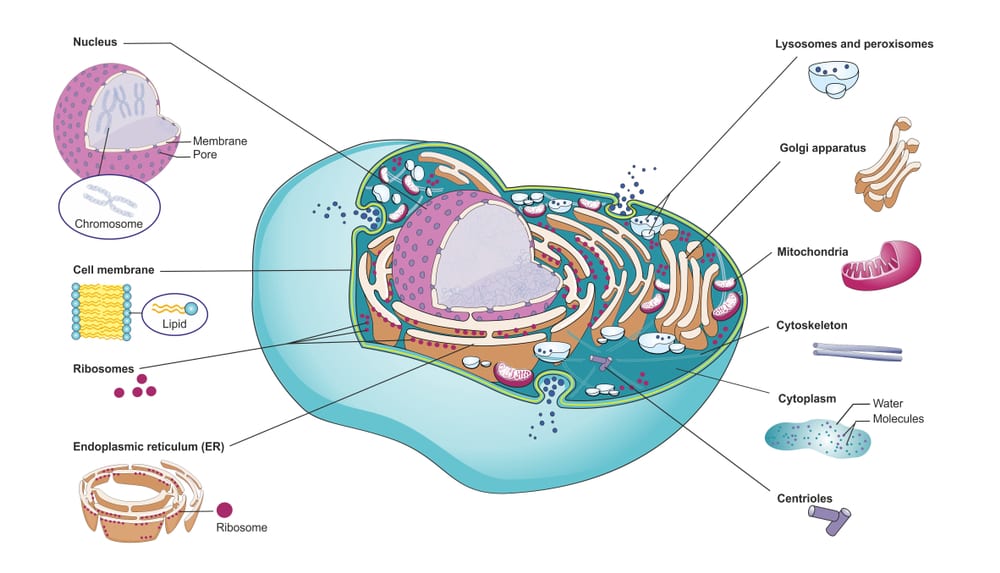Mitochondria health is crucial for overall well-being. There’s a popular notion that says the mitochondria are the powerhouses of the cell. These organelles or tiny cellular structures found in eukaryotic cells consist of two membranes as well as a matrix. Chemical reactions happen in the membrane while fluid is contained in the matrix. The primary role of a mitochondrion is to facilitate cellular respiration, which enables the cell to take in nutrients, break it down, and convert it into energy. This power is expended for various bodily functions. While these powerhouses can be easily neglected because they aren’t visible to the naked eye, it’s crucial that you take care of them since they play a significant part in your body’s optimal performance.

Fortunately, science has found ways to promote better mitochondria health by:
1. Doing HIIT Exercises
A HIIT or High-Intensity Interval Training workout alternates intense anaerobic exercise with short recovery periods until you’ve spent all your energy. Anaerobic exercise is a type of calisthenics that’s severe enough to cause lactate to form and promotes strength, speed, and power.
While any type of physical movement can boost the health of your mitochondria, HIIT has been found to have significant effects on cell function, leading these powerhouses to become more robust and produce more proteins.
Here are a few HIIT moves you can do in your living room as much as you can for 45 seconds each:
- Butt Kicks – You start by standing with your weight balanced on both legs, hip-distance apart, then kick your left heel behind to hit your left glute and alternate between your left and right foot.
- Jump Squats – For this move, you stand a little further than hip-distance so you can bend your knees and sit your butt back. Afterward, while keeping your chest upright, you jump as high as you can and land softly.
- Burpees – Assume a standing position and put your palms on the floor. Then, you should jump back to do a quick high plank, bend your elbows, do a push-up, and jump up to resume your starting place.
- Mountain Climbers – Begin in a high plank position and bring your right knee beneath your torso while keeping your toes off the ground. Return your right foot to its original place and switch legs.
- Alternating Side Lunges – With your feet together, step as far as you can to the left and bend your knee. Switch to the other foot and do as many reps as possible within 45 seconds.
2. Opting for a Ketogenic Diet
The ketogenic or keto diet focuses on high fat while encouraging you to lower your consumption of carbohydrates and sugar. One of the main things you should remember to do is to track your carbs. It is believed that this type of meal plan improves the physical condition of people with poor health, as well as boost mental performance.
3. Developing Restorative Sleeping Habits
Restorative sleep is more than just getting enough hours of snooze. The things you do during the day, especially before bedtime, can have a significant impact on the quality of your shut-eye. Sleep aids in the work of the glymphatic system, which acts as the waste clearance pathway of the body. A night of restful sleep allows your brain to clear the junk and maintain healthy cells.
These are two crucial things you can do to promote restorative sleep:
- Control Blue Light Exposure – Your circadian rhythm depends on its environment to set your body clock for day or night time. Today’s devices emit blue light, which can trick your brain into thinking that it’s still morning. You should limit your computer or phone usage before bedtime to facilitate restorative sleep.
- Have a Consistent Sleeping Schedule – Stick to regular sleep and wake times to ensure that your circadian rhythm maintains its loop. Irregular sleeping patterns will only serve to confuse your body.
4. Walking Barefoot on the Ground
Grounding or earthing is the practice of walking barefoot on land as well as sand. This technique promotes direct physical contact with electrons on the surface of the Earth to alleviate physiological dysfunction, including irregular sleep and chronic pain. Having regular periods of grounding is believed to help boost mitochondria health.
Conclusion
Having healthy cells and mitochondria can improve your energy levels, increase your life longevity, and boost your metabolism. A health-conscious lifestyle with regular HIIT exercise and restorative sleep habits can facilitate your well-being, physically and mentally. You can also try going on a keto diet by eating fewer carbs and protein while consuming more nutritious fats such as those from avocados and fatty fish.








